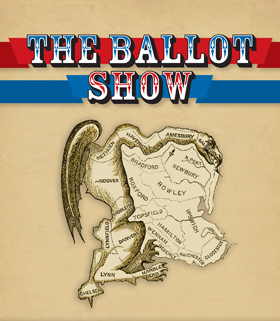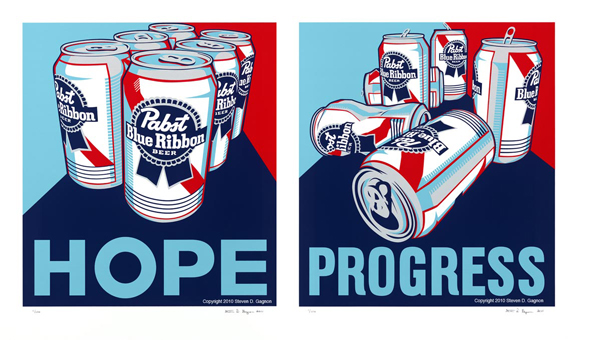
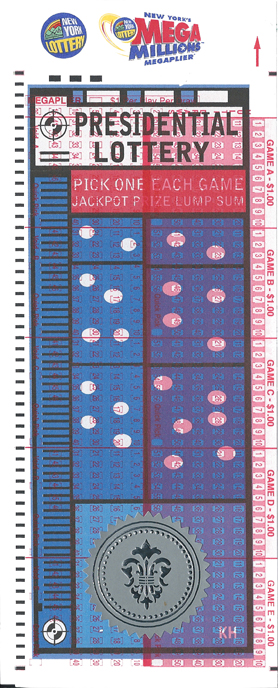
The Front Room presents, The 3rd Quadrennial:
The Ballot Show
October 25th–November 6th
Opening: Thurs Oct 25th 7–9
Featuring works by:
Wayne Adams, Daniel Aycock, Julia Whitney Barnes, Thomas Broadbent, Ken Butler, Ethan Crenson, Steven Gagnon, Hubert Dobler, Robert Egert, Peter Fox, Enrico Gomez, Gregory de la Haba, Eric Heist, Kim Holleman, Lori Korchek/Mike Bade, Jesse Lambert, Jason Clay Lewis, Stephen Mallon, Sascha Mallon, Karen Marston, Mark Masyga, Geoffrey Owen Miller, Rob de Oude, Ross Racine, Ellen Rand, Marshall Reese/Nora Ligorano, Daniel Rosenbaum, Emily Roz, David Shapiro, Mark Stilwell, Savannah Spirit, Rodger Stevens, Miho Suzuki, Kathleen Vance, Cibele Viera, Larry Walczak, and more.
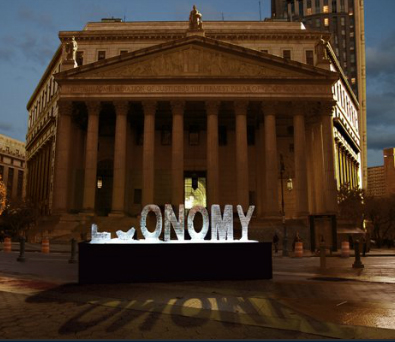 The Front Room Gallery is proud to present the third quadrennial “Ballot Show”, which focuses on the American electoral system, and the overall notion of voting with a ballot. “The Ballot Show,” held every 4 years since 2004, is inspired by the American election, and contemplates our antiquated electoral-college voting process.
The Front Room Gallery is proud to present the third quadrennial “Ballot Show”, which focuses on the American electoral system, and the overall notion of voting with a ballot. “The Ballot Show,” held every 4 years since 2004, is inspired by the American election, and contemplates our antiquated electoral-college voting process.
Historically political art has often been associated with repression. This exhibition, however, is motivated by the idea of making a choice, and what it that choice represents.Steven Gagnon’s diptych, “Hope” and “Progress”, parody the famous Shephard Fairey portrait of President Obama, and feature an unopened six-pack of the hipster beer, Pabst Blue Ribbon, as one component and the following serigraph image of the cans empty and smashed. Jason Clay Lewis’sneon sign “Inner Peace $100, Blow Jobs $20” is about a more basic choice.
Many of the artists in this show have gone outside of their wheelhouse to create works specifically for this show. Ethan Crenson will be doing a performance at the opening in which he will tattoo people with their party affiliation on their hands knuckles a la “Knight of the Hunter”. Kim Holleman's piece is an installed work and a point of sale purchase for Presidential Lottery Tickets. Holleman made the designs and printed them on actual lottery tickets. Complete with Presidential Foil Seals on them, and signed to make them, "official". Holleman's ballot lottery is a commentary on buying elections, and how "the candidate that spends the most money, has the best chance of winning the grand prize".
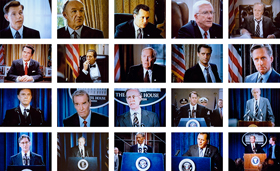 Veteran political artists Marshall Reese and Nora Ligorano's video of a cast ice sculpture "Melting Middle Class" might be chilling, and it might be true. With AMERICA for PRESIDENT, Lori Korchek and Mike Badehave been traveling across the country with a replica of the Oval Office desk, asking Americans to take a seat as Commander in Chief and tell them "what good they would do for America;" The will have the actual desk as part of performance/installation with the video in the gallery.Emily Roz’s polaroid grids of actors portraying The President in Hollywood movies leave us with the impression that "Presidential" might just be a look.
Veteran political artists Marshall Reese and Nora Ligorano's video of a cast ice sculpture "Melting Middle Class" might be chilling, and it might be true. With AMERICA for PRESIDENT, Lori Korchek and Mike Badehave been traveling across the country with a replica of the Oval Office desk, asking Americans to take a seat as Commander in Chief and tell them "what good they would do for America;" The will have the actual desk as part of performance/installation with the video in the gallery.Emily Roz’s polaroid grids of actors portraying The President in Hollywood movies leave us with the impression that "Presidential" might just be a look.
During this time of overt partisanship “The Ballot Show” is not about looking at the candidates, it is about looking at the system that created them, and us.
Opening: Thurs Oct 25th 7–9
